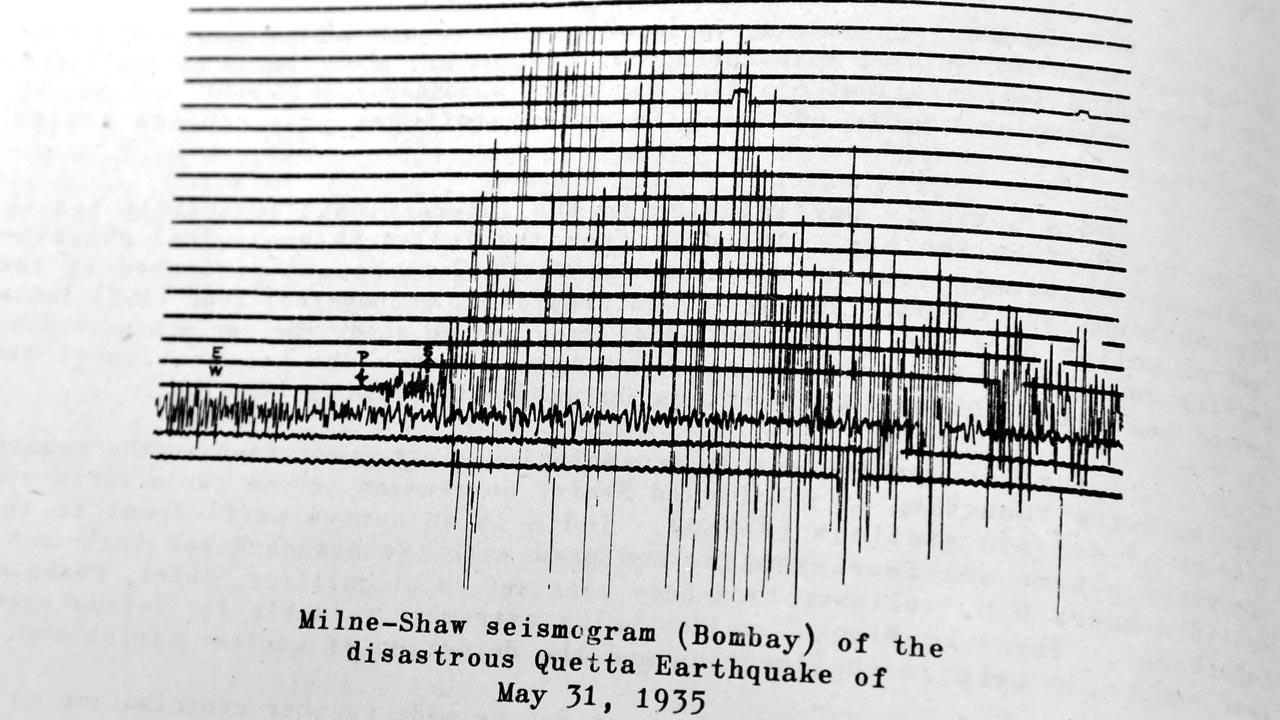Home / Sunday-mid-day / / Article /
IMD to complete 150 years this year, Mumbai roughly 183 having its own history
Updated On: 21 January, 2024 06:47 AM IST | Mumbai | Arpika Bhosale
The Indian Meteorological Department marks 150 years this year, but the conservatory at Mumbai has an older history, say its keepers

This is the seismograph reading of the Quetta earthquake in 1935. India was the only pacific country at the time that had the equipment to captuure this reading. According to officials the Indian government were informed about the reading as soon as it came in, so that aid could be sent in as soon as possible
Bombay Port was the East India Company’s (EIC) favourite one,” informs weather enthusiast Rajesh Kapadia. “The waters are calmer and the Arabian Sea is not as choppy as the Bay of Bengal. These were the primary reasons for the first observatory in India to be built in Colaba in 1823.” The observatory studied geomagnetism and meteorology to provide data for the Company to chart the safest sea to and from London to Bombay—a journey of 10,998 nautical miles.
“The EIC was concerned about goods, and did not want to lose trade ships to storms,” says Sunil G Kamble, Director, Indian Meteorological Department (IMD). “They were essentially trying to grow the trade lines between India and England. The first observatory was much smaller than today’s IMD Mumbai building.”




